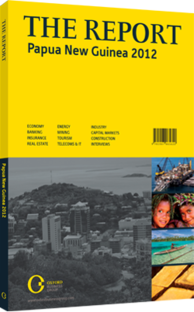OBG talks to Surin Pitsuwan, Secretary-General, ASEAN

Interview: Surin Pitsuwan
How can ASEAN assist member states in addressing significant infrastructure challenges?
SURIN PITSUWAN: Assistance to ASEAN member states for addressing infrastructure challenges is carried out in indirect ways. Mostly it is done by sharing experience and best practices in areas such as urban transport planning, development and management. Other avenues of support include the harmonisation of regulations and procedures and the development ASEAN-wide hard infrastructure networks like the Singapore-Kunming rail link and the ASEAN highway network. Furthermore, we have also established effective mechanisms of financial mobilisation for regional infrastructure projects, such as the ASEAN Infrastructure Fund.
How are logistical integration issues within the ASEAN market being addressed?
PITSUWAN: ASEAN plans to achieve full integration of logistics services by 2013. To guide this agenda it has created a roadmap, which was endorsed by the ASEAN economic ministers in 2007. This strategy document provides detailed measures and action plans to integrate logistics services across the region. This involves various related ASEAN services, Customs, transport, telecommunications and investment bodies, as well as private sector organisations.
How will a free and open investment regime be achieved to increase ASEAN’s competitiveness?
PITSUWAN: ASEAN’s vision for an integrated regional economy includes the free flow of both investment and services. Towards this end, ASEAN has identified strategic initiatives in these areas, as set out in the ASEAN Economic Community (AEC) Blueprint. The organisation has taken concrete steps to realise these by 2015. One bold initiative to establish this free and open regime has been the ASEAN Comprehensive Investment Agreement (ACIA). As the name suggests, the ACIA is comprehensive, but more than that, it is also based on international best practices and on a par with other international investment agreements in terms of it scope, rights and obligations. An important pillar of the agreement is its liberalisation component. Under the ACIA, ASEAN adopted a negative list approach in the formulation of the so-called reservation list, meaning anything outside the list is open. The agreement came into force in early 2012 at the 20th ASEAN Summit held in Phnom Penh, Cambodia.
ASEAN took further steps towards liberalising the market by agreeing to progressively reduce or eliminate reservations contained in the list following the strategic phases of the AEC Blueprint. Member states are now working to improve the region’s investment regime by reducing or removing impediments.
What benefits and opportunities do you expect to come about as a result of ASEAN nations working together to make the region a leading destination for international tourism?
PITSUWAN: ASEAN member states all have tremendous potential for attracting international tourists.
Combining their individual efforts into a collective campaign would multiply rewards to individual countries as well as the region as a whole. ASEAN has been implementing a number of initiatives to promote the region as a single tourism destination, such as developing multiple-country tour packages, initiating joint promotion campaigns and developing ASEAN-wide tourism websites.
Currently, ASEAN is running joint marketing and promotional efforts within the region’s main source markets of Australia, China, Japan and the Republic of Korea. The collaboration will also include the establishment of an ASEAN common area within international tourism travel fairs and the establishment of the ASEAN Promotional Chapter for Tourism in Australia, and the marketing of tourism products through the tourism portal www.southeastasia.org.
You have reached the limit of premium articles you can view for free.
Choose from the options below to purchase print or digital editions of our Reports. You can also purchase a website subscription giving you unlimited access to all of our Reports online for 12 months.
If you have already purchased this Report or have a website subscription, please login to continue.

